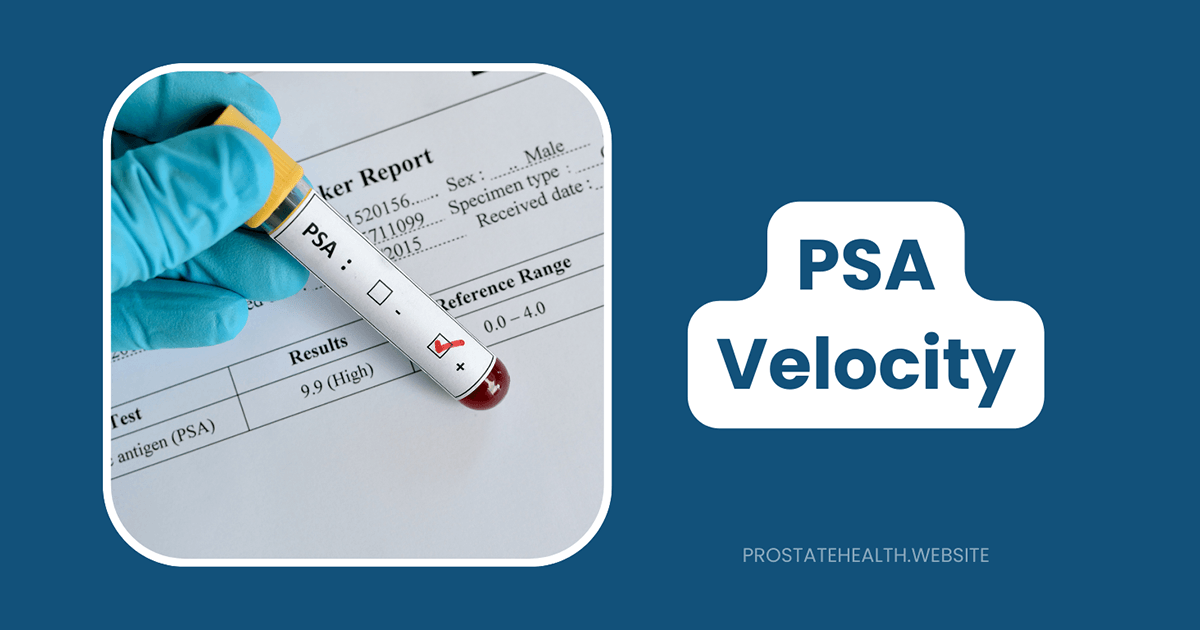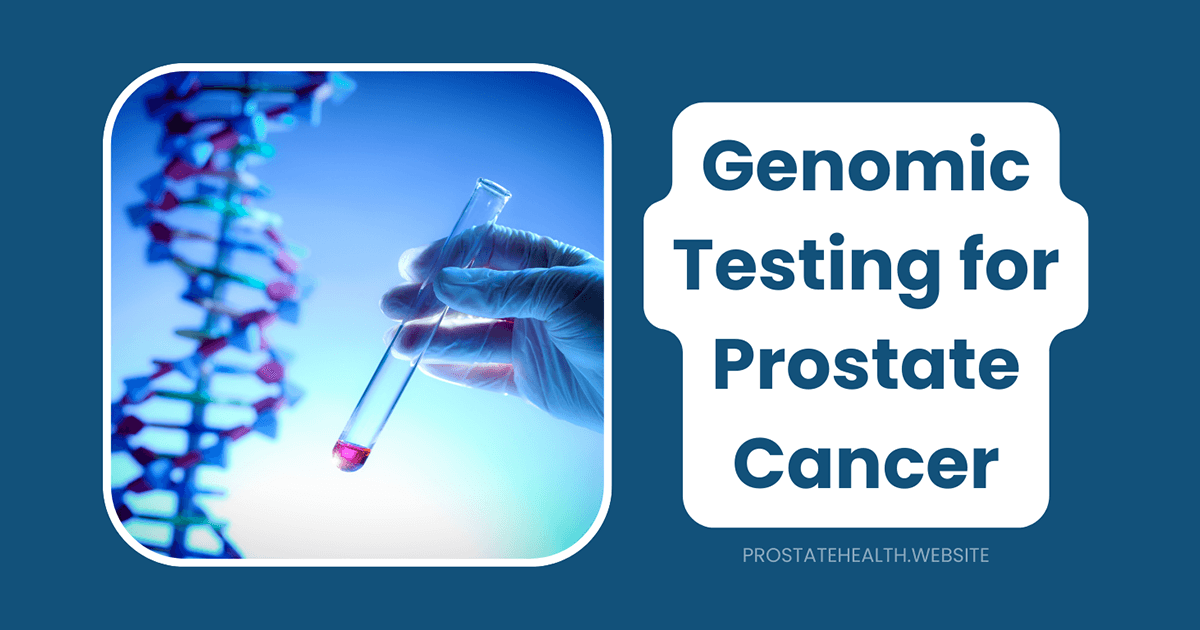High-Risk Groups: Special Screening Considerations for Prostate Cancer

When my uncle was diagnosed with aggressive prostate cancer at 48, it changed our family’s perspective on screening forever. As an African American man with a now-significant family history, I suddenly found myself in not one but two high-risk categories. The standard screening advice—to start discussions at 50 or 55—clearly didn’t apply to me. But finding clear guidance on what did apply proved surprisingly difficult.
This experience isn’t unique. While general prostate cancer screening guidelines have received significant attention (and generated considerable controversy), the specific recommendations for high-risk populations often get lost in the discussion. Yet these are precisely the men who stand to benefit most from appropriate, targeted screening.
In this comprehensive guide, we’ll explore who qualifies as “high-risk,” what the latest evidence tells us about screening in these populations, and how to develop a personalized screening plan that balances the benefits of early detection with the potential harms of overdiagnosis.
Who Is Considered High-Risk for Prostate Cancer?
Prostate cancer risk isn’t distributed equally across the population. Several factors significantly increase a man’s likelihood of developing the disease—particularly aggressive forms that benefit most from early detection.
African American Men
Black men face a substantially higher burden of prostate cancer compared to other racial and ethnic groups:
- Incidence rate: 191.5 per 100,000 Black men vs. 114.5 per 100,000 White men (a 67% higher rate)
- Mortality rate: Black men are more than twice as likely to die from prostate cancer
- Earlier onset: Prostate cancer often develops at younger ages in Black men
- More aggressive disease: Higher rates of high-grade tumors at diagnosis
These disparities stem from a complex interplay of genetic, environmental, and social factors. Dr. Edward Schaeffer, Chair of Urology at Northwestern University, notes: “The biology of prostate cancer appears different in African American men. We see more aggressive molecular features and distinct genetic alterations that may contribute to worse outcomes.”
Men with Family History
Having relatives with prostate cancer significantly increases risk:
- First-degree relatives: Having a father or brother with prostate cancer increases risk 1.3 to 8.4-fold
- Multiple affected relatives: Risk increases with each additional affected family member
- Age of diagnosis: Earlier diagnosis in relatives (before age 65) suggests higher genetic risk
- Pattern of inheritance: Risk is highest when multiple generations are affected
Dr. William Catalona, a pioneering researcher in prostate cancer screening, explains: “Family history remains one of our strongest risk predictors. When we see prostate cancer running in families, particularly at younger ages, it signals the need for heightened vigilance.”
Carriers of Genetic Mutations
Certain inherited genetic mutations dramatically increase prostate cancer risk:
BRCA2 Mutations
- 8.6-fold increased risk in men under 65
- More likely to develop aggressive disease
- Associated with poorer survival outcomes
- Higher positive predictive value of PSA testing
BRCA1 Mutations
- 4.5-fold increased risk in men under 65
- Less strongly associated with prostate cancer than BRCA2
- Still warrants enhanced surveillance
Lynch Syndrome (Mismatch Repair Gene Mutations)
- 30% cumulative risk by age 70 (vs. 9% in general population)
- MSH2 and MSH6 mutations particularly associated with prostate cancer
- Often results in high-grade disease (Gleason scores 8+)
- 85% of MSH2 carriers in studies had clinically significant disease
Other Genetic Factors
- HOXB13 mutations: Associated with early-onset, hereditary prostate cancer
- ATM mutations: Linked to increased risk and potentially aggressive disease
- CHEK2 mutations: Associated with moderate increase in risk
- Polygenic risk scores: Combinations of common genetic variants that together increase risk
Current Screening Recommendations for High-Risk Groups
While general population guidelines have moved toward shared decision-making starting at age 55, high-risk men require different considerations. Here’s what major organizations recommend:
For African American Men
- American Cancer Society (ACS): Begin discussion about screening at age 45
- American Urological Association (AUA): Consider baseline screening at age 40-45
- National Comprehensive Cancer Network (NCCN): Begin screening at age 40
- Prostate Cancer Foundation: Consider baseline PSA test at age 40
For Men with Family History
- ACS: Begin discussion about screening at age 45 if father or brother diagnosed before 65
- AUA: Consider baseline screening at age 40-45 with family history
- NCCN: Begin screening at age 40, or 10 years before the youngest diagnosis in the family
- USPSTF: Acknowledges higher risk but doesn’t provide specific age recommendations
For Carriers of Genetic Mutations
- NCCN: Annual PSA and DRE beginning at age 40 for BRCA2 carriers
- NCCN: Consider screening at age 40 for BRCA1 carriers
- IMPACT Study Recommendations: Begin PSA screening at age 40 for BRCA1/2 and Lynch syndrome carriers
- Consensus Guidelines: Consider baseline PSA at age 40, or 10 years before earliest family diagnosis
Dr. Veda Giri, Director of Cancer Risk Assessment and Clinical Cancer Genetics at Sidney Kimmel Cancer Center, emphasizes: “For men with genetic mutations, particularly BRCA2, prostate cancer screening isn’t optional—it’s essential. These men develop more aggressive disease and benefit significantly from early detection.”
The Science Behind Enhanced Screening for High-Risk Groups
The recommendations for earlier and more intensive screening in high-risk populations aren’t arbitrary—they’re based on growing scientific evidence.
Evidence for African American Men
Recent studies provide compelling support for targeted screening in Black men:
- A 2025 analysis published in CA: A Cancer Journal for Clinicians documented that Black men have a 67% higher incidence of prostate cancer despite similar screening rates
- Research shows that baseline PSA levels are higher in Black men at younger ages, suggesting earlier disease development
- Studies indicate that Black men with prostate cancer often present with higher Gleason scores, indicating more aggressive disease
- Data reveals that Black men experience significant treatment delays, with nearly twice the likelihood of experiencing delays exceeding 6 months
These findings suggest that earlier screening could help address the disproportionate burden of prostate cancer in Black communities.
Evidence for Genetic Mutation Carriers
The IMPACT study (Identification of Men with a genetic predisposition to Prostate Cancer) has provided valuable insights:
- BRCA2 carriers were almost twice as likely to have aggressive prostate cancer compared to non-carriers
- The positive predictive value of PSA testing was significantly higher in BRCA2 carriers
- 85% of MSH2 carriers and 75% of MSH6 carriers had clinically significant prostate cancer
- Targeted screening detected clinically significant cancers at earlier, more treatable stages
Dr. Ros Eeles, who leads the IMPACT study, notes: “Our research clearly demonstrates that targeted PSA screening in BRCA2 carriers identifies clinically significant prostate cancers that might otherwise be missed or detected too late.”
Developing a Personalized Screening Plan
If you fall into a high-risk category, how should you approach prostate cancer screening? Here’s a framework to guide your decision-making:
Step 1: Assess Your Personal Risk Profile
Start by understanding exactly which risk factors apply to you:
- Race/ethnicity: Are you of African American or Afro-Caribbean descent?
- Family history: How many relatives have had prostate cancer? At what ages were they diagnosed?
- Genetic status: Have you had genetic testing? Do you carry known mutations?
- Multiple risk factors: Do you have more than one risk factor (e.g., African American with family history)?
The combination of multiple risk factors may warrant even more vigilant screening.
Step 2: Consider Baseline Testing
For high-risk men, establishing a baseline PSA level in your early 40s provides valuable information:
- A PSA level below 1 ng/mL at age 40 suggests lower lifetime risk
- A PSA level above 1 ng/mL may indicate the need for more frequent monitoring
- PSA velocity (rate of change over time) can be more informative than absolute values
- Baseline testing provides a reference point for future comparisons
Dr. Judd Moul, former Chief of Urology at Duke University, explains: “A baseline PSA at age 40 for high-risk men gives us a window into their future risk. Men with very low baseline levels might need less intensive follow-up, while those with higher levels warrant closer monitoring.”
Step 3: Discuss Screening Frequency
If you decide to proceed with screening, the frequency should be tailored to your risk level:
For African American Men:
- With PSA <1 ng/mL: Consider testing every 2 years
- With PSA 1-3 ng/mL: Annual testing recommended
- With PSA >3 ng/mL: Further evaluation and potentially more frequent monitoring
For Men with Family History:
- With PSA <1 ng/mL: Consider testing every 1-2 years
- With PSA 1-3 ng/mL: Annual testing recommended
- With PSA >3 ng/mL: Further evaluation and potentially more frequent monitoring
For Genetic Mutation Carriers:
- Annual PSA testing generally recommended regardless of baseline
- Consider multiparametric MRI as an adjunct to PSA testing
- More intensive follow-up for borderline or rising PSA values
Step 4: Consider Advanced Screening Methods
High-risk men may benefit from screening approaches beyond standard PSA testing:
- Multiparametric MRI: Can visualize suspicious areas and reduce unnecessary biopsies
- Free PSA ratio: The percentage of PSA that circulates freely vs. bound to proteins
- PSA density: PSA level relative to prostate size
- 4Kscore or PHI (Prostate Health Index): Blood tests that combine multiple markers
- PCA3: Urine test that measures a prostate cancer-specific gene
Dr. Samir Taneja, Director of Urologic Oncology at NYU Langone Health, advises: “For high-risk men, we should leverage all available tools. Combining PSA with MRI and newer biomarkers can significantly improve our ability to detect clinically significant cancers while avoiding unnecessary biopsies.”
Special Considerations for Different High-Risk Groups
Each high-risk category presents unique challenges and considerations.
For African American Men – Beyond earlier screening, several factors deserve attention:
- Access to care: Addressing barriers to healthcare access is crucial
- Cultural factors: Culturally sensitive education and outreach improve participation
- Physician bias: Ensuring equal treatment recommendations regardless of race
- Community engagement: Partnering with trusted community organizations enhances screening efforts
Dr. Charles Rogers, a public health researcher focusing on cancer disparities, notes: “We can’t address the prostate cancer burden in Black communities through screening alone. We need comprehensive approaches that address systemic barriers to care and build trust through community partnerships.”
For Men with Family History – Understanding the pattern of prostate cancer in your family provides important context:
- Maternal vs. paternal inheritance: Prostate cancer risk can be transmitted through either parent
- Age pattern: Earlier diagnoses in the family suggest higher genetic risk
- Cancer aggressiveness: Family history of aggressive disease warrants particular vigilance
- Other cancers: Family history of breast, ovarian, or pancreatic cancer may suggest BRCA mutations
Consider creating a detailed family cancer history to share with your healthcare provider.
For Genetic Mutation Carriers
Men with known genetic mutations should consider:
- Comprehensive cancer screening: Many mutations increase risk for multiple cancers
- Genetic counseling: Professional guidance helps interpret genetic results and their implications
- Research participation: Clinical trials may offer access to cutting-edge screening approaches
- Family implications: Cascade testing for relatives may identify others at risk
Dr. Leonard Gomella, Chair of Urology at Jefferson University, emphasizes: “Men with genetic mutations like BRCA2 aren’t just at higher risk for prostate cancer—they’re at risk for more lethal forms of the disease. This dramatically shifts the benefit-to-harm ratio of screening in their favor.”
Addressing Common Concerns About Enhanced Screening
High-risk men often have specific concerns about more intensive screening approaches.
“Won’t earlier screening just lead to overdiagnosis?”
While overdiagnosis is a legitimate concern in general population screening, the calculus changes for high-risk groups:
- High-risk men are more likely to develop aggressive, potentially lethal cancers
- The benefit-to-harm ratio shifts significantly in favor of screening
- Newer approaches like MRI-guided biopsies can help distinguish significant from insignificant cancers
- Active surveillance provides a management option for low-risk disease
“Is the digital rectal exam (DRE) still necessary?”
The role of DRE remains somewhat controversial:
- Most guidelines recommend combining PSA with DRE for high-risk men
- DRE can sometimes detect cancers missed by PSA testing alone
- DRE may be particularly valuable for men with normal PSA but high genetic risk
- The examination is quick, though admittedly uncomfortable for many men
“How do I find doctors experienced with high-risk screening?”
Finding the right healthcare team is crucial:
- Academic medical centers often have specialized high-risk clinics
- Cancer centers designated by the National Cancer Institute typically offer risk-adapted screening
- Genetic counselors can provide referrals to physicians experienced with mutation carriers
- Professional organizations like the Prostate Cancer Foundation maintain provider directories
The Future of High-Risk Screening
Screening approaches for high-risk men continue to evolve as our understanding deepens.
Emerging Technologies
Several promising approaches may further improve screening for high-risk populations:
- Liquid biopsies: Blood tests that detect circulating tumor DNA
- Artificial intelligence: Algorithms that better interpret MRI images and predict cancer risk
- Molecular imaging: PET scans with prostate-specific tracers
- Microbiome analysis: Examining the relationship between gut bacteria and prostate cancer risk
Ongoing Research
Major studies are specifically investigating screening in high-risk populations:
- The IMPACT study continues to follow BRCA1/2 and Lynch syndrome carriers
- The PROFILE study is evaluating targeted screening in men with genetic risk
- The RESPOND study is investigating genetic and environmental factors in African American men
- The PROCEDE study is examining the effectiveness of MRI-based screening in high-risk men
Dr. Brian Helfand, Director of the John and Carol Walter Center for Urological Health, predicts: “Within the next five years, I believe we’ll move to much more personalized screening protocols based on comprehensive risk assessment that includes genetic factors, family history, race, and baseline PSA. This will allow us to focus intensive screening on those who truly need it.”
Taking Action: Next Steps for High-Risk Men
If you believe you fall into a high-risk category, here are concrete steps to take:
- Document your family history: Create a detailed record of all cancers in your family, including ages at diagnosis
- Consider genetic testing: If you have a strong family history of prostate, breast, ovarian, or pancreatic cancer, discuss genetic testing with your doctor
- Find the right healthcare team: Seek providers experienced in risk-adapted prostate cancer screening
- Develop a screening plan: Work with your healthcare provider to create a personalized screening strategy based on your specific risk factors
- Stay informed: As research evolves, screening recommendations may change
- Consider lifestyle modifications: While screening is important, so is risk reduction through diet, exercise, and maintaining a healthy weight
- Share information with male relatives: If you’re at high risk, your male relatives may be too
Conclusion: Balancing Vigilance and Peace of Mind
For high-risk men, prostate cancer screening isn’t just a medical decision—it’s a pathway to empowerment and potentially life-saving early detection. While the general screening debate continues, the evidence for targeted screening in high-risk populations grows increasingly compelling.
The key is finding the right balance: being vigilant without becoming anxious, taking appropriate action without overreacting to every test result, and working with healthcare providers who understand the nuances of risk-adapted screening.
As someone in multiple high-risk categories myself, I’ve found that knowledge truly is power. Understanding my risk has allowed me to take control of my health journey, making informed decisions about screening that provide both peace of mind and the best chance for early detection should cancer develop.
Remember that being high-risk doesn’t mean you’re destined to develop prostate cancer—it simply means you have more to gain from appropriate, personalized screening. By taking a proactive approach now, you’re investing in your future health and wellbeing.
References:
- American Cancer Society
- National Comprehensive Cancer Network
- IMPACT Study Collaborative Group
- American Urological Association
- Prostate Cancer Foundation






